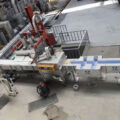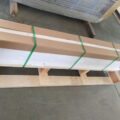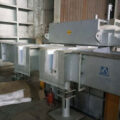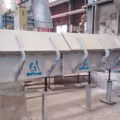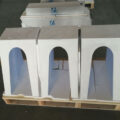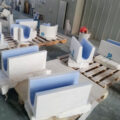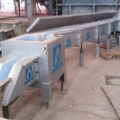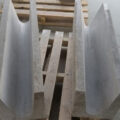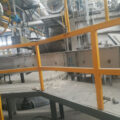A trough is used for carrying molten metal, comprising an outer shell defined by a bottom wall and two side walls, an insulating layer filling the outer shell and a conductive U-shaped refractory trough body for carrying molten metal, the trough body is embedded in the insulating layer. At least one heating element is positioned in the insulating layer, adjacent to but spaced apart from the trough body, to provide an air gap between the heating element and the trough body.
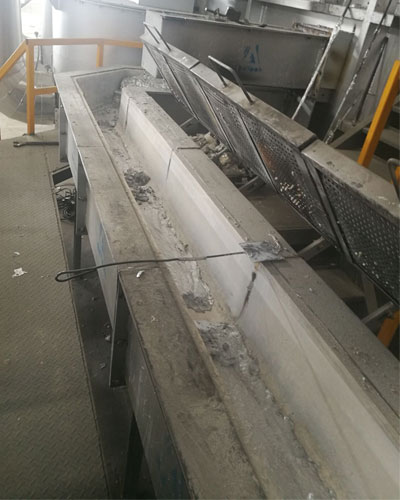
A molten metal delivery system is used to transfer molten aluminum into a ladle or launder, where the launder usually directs the molten aluminum into a casting mold and then casts it into a usable block, for example as an ingot. The launder is essentially a trough, channel or duct outside the reverberation furnace. The ladle is a large container into which molten metal is poured from the furnace. After the molten metal is placed in the ladle, the ladle is transported from the furnace area to another part of the equipment, where the molten metal in the ladle is poured into the mold.
The trough for carrying molten metal uses structural refractory materials, such as ceramics, which are resistant to disintegration due to corrosion of molten metal. A low-flexure molten metal distribution launder comprises an elongated structural beam that extends over a plurality of casting stations. A plurality of metal level sensors extends downward from the elongated structural beam to measure molten metal levels in underlying metal casting stations. A plurality of spaced U-shaped refractory hangers is supported within the structural beam to form a refractory channel.
The tap hole is usually a tapered hole that houses a tapered plug called a “tap plug”. Remove the plug from the tap hole to allow the molten metal to be discharged from the furnace, and insert it into the tap hole to prevent the molten metal from flowing out of the furnace.


